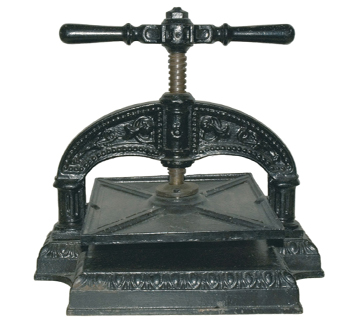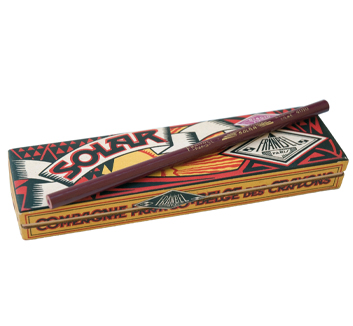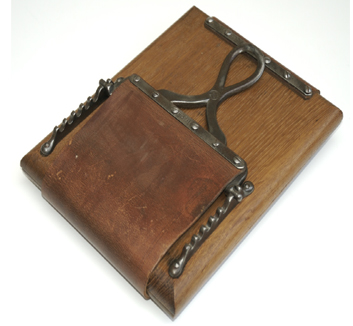C'EST LA WATT QUE JE PRÉFÈRE ! (I PREFER THE WATT !)
Copy press
Although the letter press was invented by James Watt ( registered in February 1780), the collection on display in the museum includes only one of that kind. Paired with his writing desk, it shows the practical sense of this genius inventor.
-
 The Letter Copying press was a tool used for the reproduction of administrative and commercial documents in Europe from the 19th century onwards. Often confused with a bookbinder's press, it is the ancestor of the current Xerox machine. It was used by the companies exploiting the quarries of Chauvigny, Lavoux and Jardres between 1900 and 1950 for their administrative exchanges and globally until 1960, in many companies where no one would use a typewriter.
The Letter Copying press was a tool used for the reproduction of administrative and commercial documents in Europe from the 19th century onwards. Often confused with a bookbinder's press, it is the ancestor of the current Xerox machine. It was used by the companies exploiting the quarries of Chauvigny, Lavoux and Jardres between 1900 and 1950 for their administrative exchanges and globally until 1960, in many companies where no one would use a typewriter. -
1. The user writes their letter on their usual paper with a dip pen dipped in transfer ink.
2. They place the sheet of paper under the page of the notebook intended to receive the copy.
3. The page, made of unglued thin paper, is first dampened. A thick oiled or waxed paper is used to separate it from the previus page.
4. The closed notebook is be placed under the press, which is then tightened until a slight resistance can be felt.
5. After one or two minutes, the press is unfastened and the notebook is removed.
6. The letter is printed on the back of the wet paper and can be read through it.
7. The original letter is then sent as usual. -
 The 1884 Encyclopaedic and Biographical Dictionary of Industry and Industrial Arts gives the following definition of transfer or copying ink: "These inks have the property of transferring characters drawn on an original sheet of paper to another wet sheet without erasing the original. This is done by applying a pressure of any kind. It is an ordinary ink concentrated and containing a greater quantity of gum and sugar".
The 1884 Encyclopaedic and Biographical Dictionary of Industry and Industrial Arts gives the following definition of transfer or copying ink: "These inks have the property of transferring characters drawn on an original sheet of paper to another wet sheet without erasing the original. This is done by applying a pressure of any kind. It is an ordinary ink concentrated and containing a greater quantity of gum and sugar".
As an alternative to the transfer ink, pencils and graphite could be used for copying. Copy tapes for typewriters were even developed. A letter typed using this tape could be duplicated on the copy press just like a handwritten letter with transfer ink. -
 People who needed to keep a duplicate copy of their mail or orders when they travelled, such as sales representatives, used travelling copy presses. These were made of wood, making them lighter, thinner and easier to carry. Ordinary notebooks could be used, but there were also special notebooks which were thinner than the ordinary ones.
People who needed to keep a duplicate copy of their mail or orders when they travelled, such as sales representatives, used travelling copy presses. These were made of wood, making them lighter, thinner and easier to carry. Ordinary notebooks could be used, but there were also special notebooks which were thinner than the ordinary ones. -